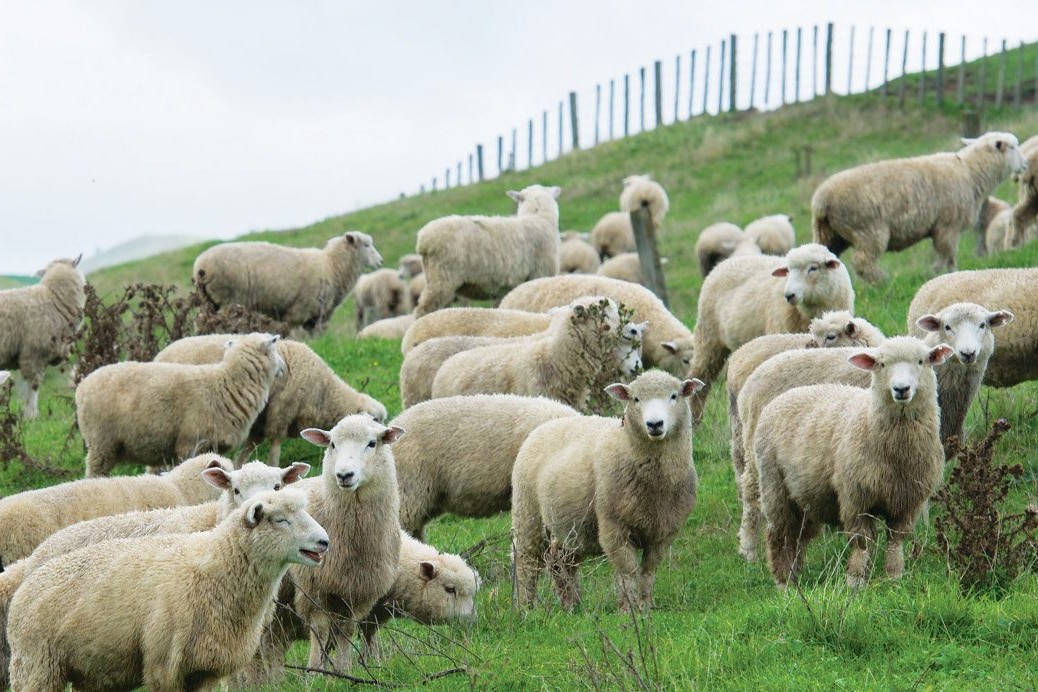Facial eczema speed bumps
Peter Andrew sets the scene for facial eczema tolerance in sheep.

Peter Andrew sets the scene for facial eczema tolerance in sheep.
Our ram breeders are world class, delivering a variety of genetic packages for their farmer clients across New Zealand. They use the latest selection technology blended with stockmanship to produce capable sires with exciting potential.
In the Gisborne-Wairoa region, their biggest genetic success has been in selecting sheep that have facial eczema tolerance. The 30-years of hard graft by dedicated breeders ended with the creation of the FE Gold rams, a bullet-proof survivor to sire our ewe flocks into the future.
They bred ewes that can be successfully mated under a major fungal storm and not only survive but also pump out a 200%-plus scanning.
Then, they will lamb a 160% docking off hill country and wean killable lambs. Perfection.
But many farmers are having speed bumps.
Flocks considered bomb-proof to FE are now having problems. The classic indicator is a drop in the two-tooth scanning rate relative to the mixed age ewe of 20-30% when normally we expect them to be 10-12% behind. The drop off is usually an increase in dries. So, what is going on?
We need to remember that the two-tooth has a smaller liver relative to her bodyweight. She is way more vulnerable, and we need to respect this more with her grazing when with the ram among the autumn toxins.
They need to be grazed separately, have higher feed covers, colder paddocks and potentially even a zinc bolus. Monitoring of either the GGT levels in bloods or spore counting pastures is also a sensible idea.
There is no profit from producing a dry two-tooth as a farmer is missing out on her lifetime production and potentially $160 of extra lamb value at weaning. Well worth the price of a zinc bolus or monitoring.
Like the development of drench resistance, maybe the Pithomyces chartarum is fighting back and evolving into something more aggressive. Pithomyces chartarum is a fungus which grows on grass and produces spores with the toxin sporidesmin which causes facial eczema.
Like kikuyu, the fungus appears to be heading south and further into the hills. Maybe it is the planet warming, or maybe it is just nature and genetic adaptation. It certainly shows every sign of becoming more tolerant to cooler conditions.
So, what’s happening now with our onfarm genetic status? Having built some FE tolerance, many farmers have now headed off in a more naive direction using more vulnerable breeds such as the terminal sire or Wiltshire. There is no real test to say what level of FE tolerance you have in your ewe flock and therefore we need to keep a close look at that two-tooth dry rate as being the canary in the FE minefield.
Our poor stud breeders must be in a quandary, we have heaps of great selection opportunities lined up with exciting potential such as low-input sheep, fleeceless sheep, no drench, no tailing and many more but which path do you take?
Change and the future
It is a changing world and some big crosswinds and headwinds are coming at us.
So, what is the future of sheep farming in this district?
Will we even have hill country farming with the carbon landfills rapidly spreading across some of the best lambing country.
I loved a seminar from an Australian consultant, Phil Holmes a few years back, who said never do something unless it passes the first principles test. To fail the test is when there is no common sense to an item’s value and I feel it is critical in these changing times.
The breeding ewe is an efficient and productive animal, being able to hunker down over winter then burst into spring with two or more killable lambs by Christmas.
Simple economics: less land, more people mean more demand and higher sheep prices.
The ewe is fundamentally a good tool for a sustainable future. She is an environmental angel in comparison to some of her more aggressive lowland land users such as dairy cows and bulls.
Unlike her bovine cousin she hates standing in water, sprinkles her pellets peacefully all over the hill and therefore is an environmental solution. She naturally does what other land users only dream about. She passes many first principles’ tests.
Carbon farming fails the first principles test because it destroys use of that land for future generations.
It is starting to look and smell like the Angora goat fibre market, just before it all crashed, and I lost some money. The investment was risky and failed the first principle test.
There are not too many certainties in life, but increased shearing costs, taxes and low wool prices are sadly a few of them. So, we need to head out of wool production and its associated shearing as fast as we can without eroding the great work done in the past.
Even though we are FE gold standard we still need to keep pushing hard for even better FE tolerance to protect our ewes.
It is all going to be quite exciting to one day have a fleeceless ewe, that docks 160% and doesn’t need to be drenched or treated for fly. I have every confidence this will be a reality.
Yes, there is lots of change out there, but it is a time to keep a steady hand and not be distracted.
- Peter Andrew is an AgFirst farm consultant based in Gisborne.




